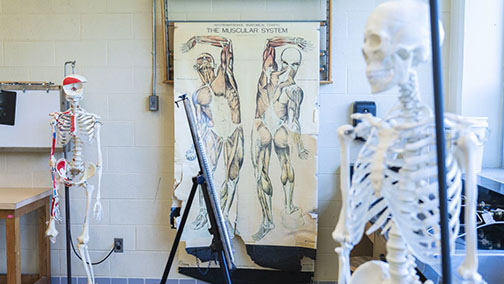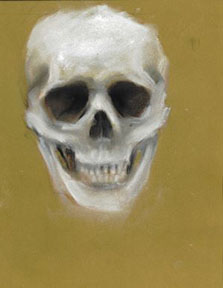by Pete Rosenbery
CARBONDALE, Ill. — A workshop this month at Southern Illinois University Carbondale is once again giving participants an opportunity to create anatomically accurate and artistic drawings from direct observations of cadavers and learn from human anatomy and medical experts.

The intensive four-day Artistic Anatomy Drawing Workshop, July 18-21, melds the arts and sciences and is designed for artists age 18 and older. Those attending will have the opportunity to further hone their skills by drawing muscles of a local body builder, said Jonathan Krimsier, a physiology instructor in SIU’s School of Medicine on the Carbondale campus who is leading the summer workshop. The model’s prominent muscles “are easily visualized so the artists will have the chance to see which muscles move and grow depending upon the movement and placement of the body,” he said.
The workshop is building on its inaugural offering in July 2023.
“We had a mix of drawing abilities from novice to highly trained, and they all left the workshop with something new,” Krimsier said. “As an anatomist, I am extremely satisfied that we were able to bring the cadaver experience to the arts.”
The registration deadline this year is July 15, and the class size is limited; residential and commuter packages are available. Learn more about registration.
Reconnecting to arts and science tradition
Antonio J. Martinez, an associate professor of photography and intermedia arts in the School of Art and Design, had a variety of participants. One student from Boston was interested in applying to a medical illustration program in the northeast, with others hailing from Nashville, Tennessee, and the local area.
A local art teacher was able to receive professional development credit.
“This workshop was a wonderful way to showcase SIU’s anatomy and art program and to differentiate ourselves from other research universities. This is a rare gem,” he said.
Students will develop a greater understanding about “the intricacies of the human body, specifically where certain tendons and muscle groups end and begin, so as to improve their drawing skills of the human form,” Martinez said, noting life drawing has “a rich history in the study of anatomy, reaching as far back as ancient Greek times, but more popularly known and practiced during the Renaissance.”
Amy Sterling attended the anatomical drawing workshop last year. A teaching artist with the Nashville Metro Parks Visual Arts program and Brentwood Library in Tennessee, Sterling is returning this year. Her work includes “Good Bones,” for which she used conte crayon and charcoal on toned paper and sketched from a skull model after a lesson on tones and highlights to create form and mass.
The workshop “connects the worlds of art and science in a way that nothing else I’ve participated in has,” Sterling said. “The accessible scientific presentation of anatomy and examples of drawing history and technique together offer a deep meditative dive into the human body and our experience within. As an artist, the opportunity to study from life is available, but rare is such an experience with cadavers. I look forward to returning.”
Jacob Yandle, who recently earned his Master of Fine Arts as a figurative oil painter from SIU, will be the workshop artist. A freelance artist, Yandle also teaches at the SIU Craft Shop, along with graphic design and digital art at John A. Logan College.
“I hope to get to meet interesting people from around the area and talk about a way of learning the human body that few artists get to experience,” he said. “I am always glad to share what I know and to continue my own training in spaces like this.”
Observation is a key component
Yandle said that the most difficulty is forcing yourself “to observe instead of drawing what you think it should look like.
“An experience like this workshop is so great because Jonathan teaches us how the body functions and what the superficial forms are. I think that after a little practice, anyone can reliably draw people,” Yandle said.
In addition to learning the basics of figure drawing and observation, Yandle hopes students enjoy visiting SIU Carbondale and drawing in a lab session.
“I also hope they walk away with a new perspective on health and how the human body works. Jonathan’s wealth of knowledge has made me a healthier artist for sure.”
Cadavers are important educational gifts

One male and two female cadavers in various states of dissection will be used to show a variety of structures of the human body. They are in their own dedicated lab space in Lindegren Hall and were given to the school for use by the donors and their families.
Krimsier said it is important to thank the individuals and their families for their generosity of what he said is an “invaluable gift” because the cadavers are used to educate nursing, medical, art, undergraduate and high school students.
